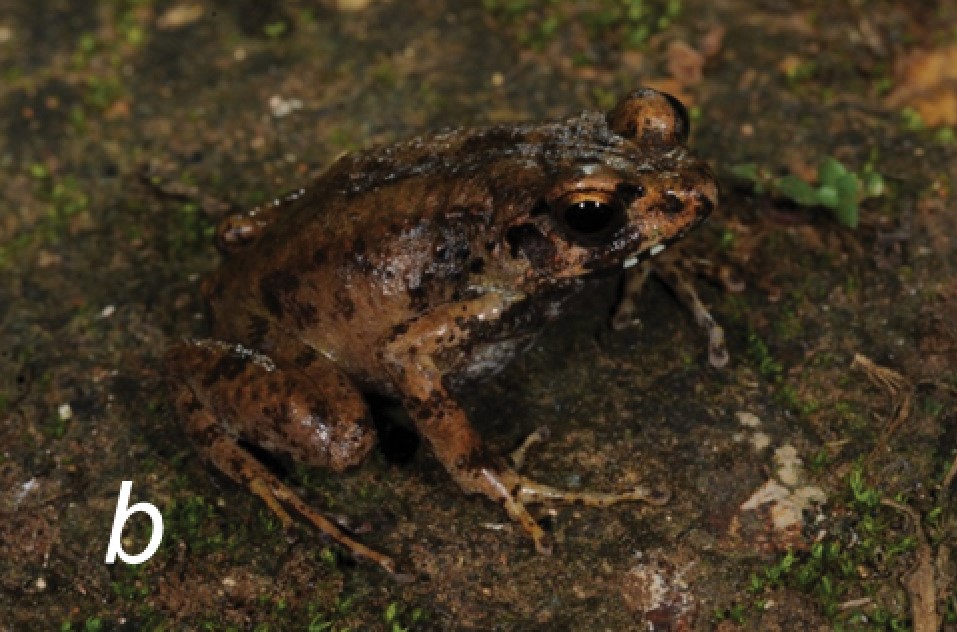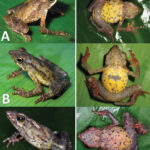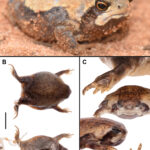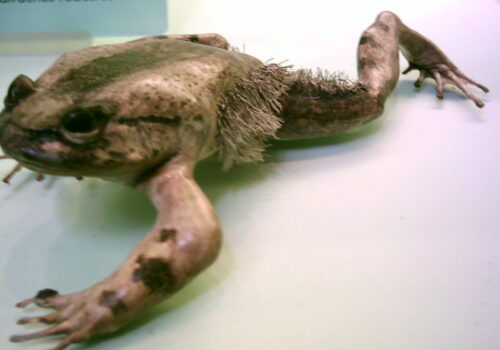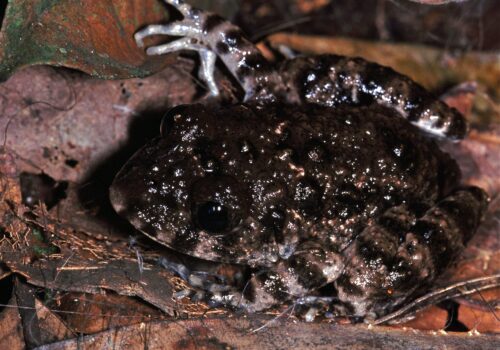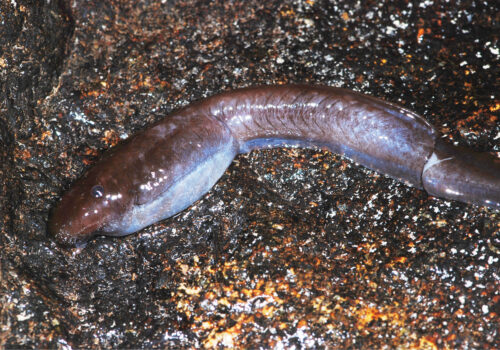- Unveiling the Hidden World of Arthroleptis carquejai: The Cryptic Jewel of the African Forests
- Taxonomy and Classification of Arthroleptis carquejai
- Natural Habitat: Forest Floor Realms and Hidden Microcosms
- Physical Characteristics: Masterpieces of Subtlety and Camouflage
- Behavior and Life Cycle: Remarkable Adaptations of a Forest Dweller
- Ecological Role: The Unseen Architects of Forest Balance
- Threats and Conservation: Safeguarding a Cryptic Sentinel
- Cultural and Scientific Importance: From Folklore to Frontier Research
- A Call for Action: Embracing Stewardship of a Delicate Forest Jewel
Unveiling the Hidden World of Arthroleptis carquejai: The Cryptic Jewel of the African Forests#
Amidst the lush, verdant tapestry of the Central African rainforests, hidden beneath leaf litter and dappled sunlight, resides a remarkably cryptic and seldom-seen amphibian—Arthroleptis carquejai. Known for its subtle beauty and elusive existence, this small frog species quietly shapes ecosystems, inspires naturalists, and intrigues scientists with its beguiling behaviors and adaptive mechanisms. Though tiny and outwardly unassuming, this frog plays a pivotal role in its habitat and provides a unique insight into tropical forest health. Let us venture deep into its secretive world, discovering why preserving this delicate species is crucial to safeguarding biodiversity in these remarkable habitats.
Taxonomy and Classification of Arthroleptis carquejai#
Scientifically classed as Arthroleptis carquejai, this frog belongs to the family Arthroleptidae, commonly known as “Squeaker frogs,” owing to their distinctive vocalizations. This family is particularly diverse in sub-Saharan Africa, encompassing many species known for their terrestrial lifestyle and unique reproductive adaptations. Within this taxonomic family, Arthroleptis carquejai falls under the genus Arthroleptis, which groups frogs that share morphological and ecological similarities. This particular species was described scientifically by the esteemed zoologist José Vicente Barbosa du Bocage in 1866, carrying the species epithet in honor of the naturalist Bento Carqueja, who discovered early specimens.
Closely related species within this genus often exhibit similar terrestrial reproductive habits and cryptic coloration, but the intricate details of morphological differences and subtle behavioral traits distinguish Arthroleptis carquejai and reinforce its classification as uniquely fascinating.
Natural Habitat: Forest Floor Realms and Hidden Microcosms#
The preferred habitats of Arthroleptis carquejai are rich, moist, tropical evergreen forests scattered across Central Africa. Primarily recorded within Angola and neighboring regions, the species thrives in leaf-litter environments beneath densely shaded canopies, where humidity remains consistently high and the environment stable. Never straying far from moisture, these frogs rely heavily upon the intricate ecological weave of fallen leaves, rotting vegetation, mossy logs, and humid soil to offer shelter, camouflage, and abundant food sources.
In this shadowy domain, tiny ecosystems thrive—the forest’s underbelly bustling quietly with insect prey, fellow amphibians, invertebrates, and microorganisms. Here, one might find delicate mushrooms punctuating decomposing logs, tiny arthropods skittering beneath leaf-layers, and moss-covered stones hosting a myriad of insects. Within this bubbling microcosm, Arthroleptis carquejai acts as both predator and prey, neatly embedded in the cycle of life. Its specific niche highlights nature’s precarious balance and reflects the health condition of entire forest ecosystems, making it a valuable indicator for ecological researchers and conservationists.
Physical Characteristics: Masterpieces of Subtlety and Camouflage#
Upon first glance, Arthroleptis carquejai may appear modest, measuring only about 20-35 millimeters in body length, yet a closer inspection reveals artistry in its physical traits. The frog presents earthy hues of rich chocolate browns, mottled grays, and muted ochre tones, intricately patterned to mimic leaf detritus, bark textures, and moist soil. Its skin surface is adorned with subtle spotting and irregular markings that aid in near-perfect camouflage.
This coloration is not merely aesthetic; it’s essential for survival. Blending seamlessly with its habitat enables this frog to evade predators such as birds, snakes, and larger amphibians. A streamlined, slender body combined with proportionate limbs and digits facilitate quick and quiet movement through dense foliage and leaf litter, allowing the frog to disappear swiftly if disturbed.
Its dark, large expressive eyes hint at its crepuscular and nocturnal activity, optimized for low-light environments. Powerful rear legs are designed for sudden swift leaps when escaping danger, a vital reflex in its densely populated forest environment.
Behavior and Life Cycle: Remarkable Adaptations of a Forest Dweller#
Feeding Behavior and Dietary Preferences#
Primarily insectivorous, Arthroleptis carquejai carefully patrols its tiny territory, hunting ants, termites, small beetles, spiders, and other miniature invertebrates. Employing ambush tactics and agile precision, it waits motionless, capitalizing on patience and stealth to capture unsuspecting prey with a rapid extension of its sticky tongue. Its preference for smaller prey reflects its size and ecological niche, positioning it as a vital regulator of insect populations.
Reproduction and Unique Developmental Patterns#
One of the truly captivating characteristics of this frog species is its direct development—this means that its lifecycle skips the aquatic tadpole stage entirely. Instead of laying eggs in water bodies, the females carefully select moist, sheltered areas under decomposing vegetation and leaf litter to deposit their precious eggs. Here, hidden from threats like predators, droughts, or flooding, these eggs develop rapidly into fully formed miniature frogs.
This adaptation, common to the genus Arthroleptis, protects young frogs from aquatic predators and unpredictable water bodies, giving the offspring a significant survival advantage amid fluctuating environmental conditions. The sight of dozens of tiny froglets emerging from sheltered vegetation represents a breathtaking natural phenomenon only witnessed by fortunate observers.
Ecological Role: The Unseen Architects of Forest Balance#
Though diminutive, Arthroleptis carquejai serves a crucial ecological function within its environment. As predator and prey, it creates linkages between different trophic levels in the forest ecosystem. By keeping insect populations in check, the frog actively contributes to maintaining forest health and ecological balance. In turn, its presence as prey supports the diverse food webs that underpin the tropical forest’s rich biodiversity.
Moreover, because of their sensitivity to environmental changes, amphibians, including this species, are essential indicators for ecological integrity and the overall health of tropical forest ecosystems. Their responses to disturbances or changes in climate serve as early-warning systems for biologists and environmental managers, informing conservation strategies and habitat management practices.
Threats and Conservation: Safeguarding a Cryptic Sentinel#
Despite its subtle beauty and ecological importance, Arthroleptis carquejai faces significant environmental threats. Deforestation, driven by logging, expanding agriculture, and infrastructure development, causes habitat fragmentation and destruction—perhaps the most pressing concern. Such habitat alteration particularly threatens terrestrial frogs, whose lives are closely bound to the delicate moisture balance, leaf debris, and intricate micro-habitats introduced earlier.
Additionally, changing climatic patterns, resulting in periodic droughts or variations in humidity and rainfall consistency, can severely impact reproductive success and survival. Although currently classified as Least Concern by the IUCN Red List due to its wide distribution, ongoing habitat loss and environmental degradation could alter conservation priorities rapidly if conditions worsen.
Conservation actions focusing on habitat protection and restoration, strengthening protected area networks, and community-driven forest management initiatives remain vital to ensure long-term survival for this species and other forest-dependent amphibians.
Cultural and Scientific Importance: From Folklore to Frontier Research#
Local cultures sometimes view amphibians like Arthroleptis carquejai as subtle symbols of fertility and rejuvenation, tied closely to annual rains and forest health. While not prominent in myths or folklore, the underlying ecological wisdom in traditional cultures recognizes their importance implicitly.
In scientific circles, this species uncovers profound insights about evolutionary biology, adaptations to terrestrial life, and habitat specialization. Its sensitive responses to environmental perturbations make it a valuable bioindicator, providing critical data on the broader implications of habitat conservation and climate change in Central African rainforests.
A Call for Action: Embracing Stewardship of a Delicate Forest Jewel#
Ultimately, the story of Arthroleptis carquejai reminds us of the immense interconnectedness within nature’s web. This shy, specialized frog might largely remain hidden from human sight, but its health, survival, and ecological contributions profoundly influence the broader environment.
By championing habitat conservation, supporting research and policymaking focused on amphibians, and advocating for sustainable practices, each of us can ensure the survival of the remarkable and vital Arthroleptis carquejai. Let this subtle jewel of the forest inspire us toward a richer understanding and deeper care for our planet and its fascinating inhabitants.


